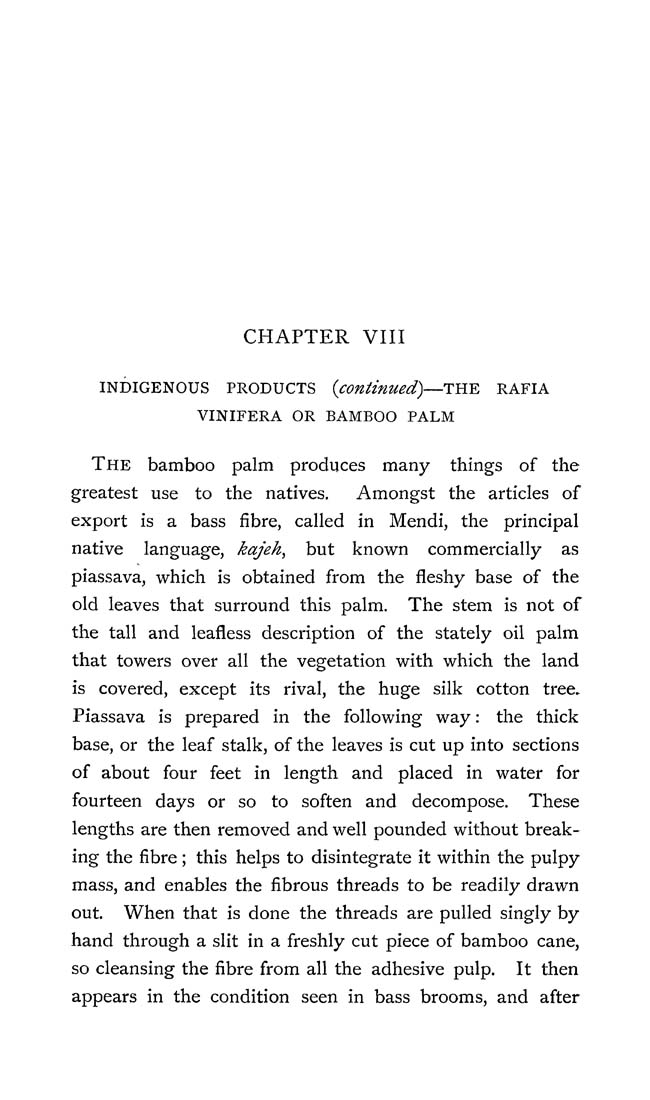CHAPTER VIII
INDIGENOUS PRODUCTS {continued)—TYiY. RAFIA
VINIFERA OR BAMBOO PALM
The bamboo palm produces many things of the
greatest use to the natives. Amongst the articles of
export is a bass fibre, called in Mendi, the principal
native language, kajeh, but known commercially as
piassava, which is obtained from the fleshy base of the
old leaves that surround this palm. The stem is not of
the tall and leafless description of the stately oil palm
that towers over all the vegetation with which the land
is covered, except its rival, the huge silk cotton tree.
Piassava is prepared in the following way: the thick
base, or the leaf stalk, of the leaves is cut up into sections
of about four feet in length and placed in water for
fourteen days or so to soften and decompose. These
lengths are then removed and well pounded without break¬
ing the fibre; this helps to disintegrate it within the pulpy
mass, and enables the fibrous threads to be readily drawn
out. When that is done the threads are pulled singly by
hand through a slit in a freshly cut piece of bamboo cane,
so cleansing the fibre from all the adhesive pulp. It then
appears in the condition seen in bass brooms, and after
|








